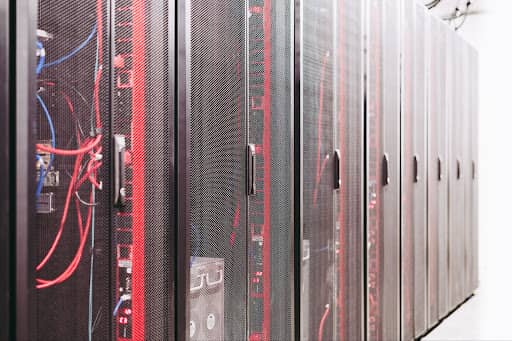
In today’s digital era, data centers are the lifeline of organizations across the globe. Housing vast amounts of crucial information, these facilities are essential for smooth and uninterrupted operations.
As the significance of data centers amplifies, the threats against them have similarly intensified. Cybercriminals and malicious entities relentlessly try to exploit any vulnerability, making the defense of these infrastructures more vital than ever.
This article delves into the top data center security best practices to safeguard your precious digital assets effectively.
Prioritize Physical Security
Often, when discussing data center security, the immediate thought goes towards digital threats. However, ensuring that the physical premises of a data center is protected is equally important.
Companies like Dgtl Infra emphasize the necessity of robust physical security protocols. Key measures include:
• Surveillance Systems:
Implement high-definition CCTV cameras with night vision capabilities at all entry and exit points. Regularly review the footage for any suspicious activity.
• Biometric Access Control:
Incorporate biometric systems like fingerprint or retinal scans to restrict unauthorized access.
• Security Personnel:
Employ trained security staff round-the-clock to monitor and respond to potential breaches or threats.
• Secured Perimeters:
Utilize fences, barriers, and bollards to safeguard the facility’s external boundary.
Maintain A Strong Network Defense
Digital threats are omnipresent and continually evolving. Adopt a multi-layered network defense strategy to shield against potential attacks:
• Firewalls:
Implement both hardware and software firewalls to filter malicious traffic.
• Intrusion Detection and Prevention Systems (IDPS):
Monitor network traffic in real-time to detect and halt any suspicious activities.
• Regular Vulnerability Scanning:
Conduct routine scans of your network to identify and patch any potential vulnerabilities.
• Implement Multi-factor Authentication (MFA):
Reinforce login credentials by using multiple forms of verification. This ensures that even if one form of authentication is compromised, malicious actors still have additional barriers to bypass.
Data Encryption
Encrypt data at all stages – at rest, in transit, and during processing. By doing so, even if data gets intercepted or accessed by unauthorized entities, it remains unintelligible without the decryption key.
Establish A Comprehensive Backup Strategy
In the event of any data loss, due to either malicious activity or unforeseen disasters, having a robust backup strategy ensures data integrity and availability. It’s essential to:
• Regularly Back Up Data:
Schedule daily or weekly backups depending on your data volume and rate of change.
• Store Backups Offsite:
Keep backup copies in a separate location to safeguard against site-specific calamities.
• Test Backups:
Periodically restore data from backups to verify their integrity.
Train And Educate Employees
Even the most sophisticated security system can be rendered useless if employees aren’t well-informed.
Conduct regular training sessions to educate staff about the latest threats and how to recognize and respond to them.
Keep Systems Updated
Cybercriminals frequently exploit outdated software and hardware. Regularly update all systems, applications, and security tools to patch any known vulnerabilities.
Practice Disaster Recovery Planning
Develop a comprehensive disaster recovery plan that delineates the steps to be taken in the event of any security breach or data loss. Regularly test and refine this plan to ensure its effectiveness.
Monitor And Review Logs
Most systems and security tools generate logs that record various activities. Regularly reviewing these logs can help in early detection of any irregularities or potential threats.
Collaborate With Security Experts
Lastly, consider partnering with cybersecurity professionals or firms that specialize in data center security. Their expertise can offer valuable insights and recommendations tailored to your specific needs.
Conclusion
Protecting a data center is a multifaceted endeavor, demanding vigilance across both physical and digital realms. In a world where data breaches can lead to substantial financial losses and reputational damage, proactively fortifying data centers has never been more critical.
By adhering to the best practices outlined above, organizations can significantly bolster their defense against myriad threats and ensure the security and availability of their invaluable digital assets.
Remember, in the realm of data security, it’s always better to be proactive rather than reactive.


